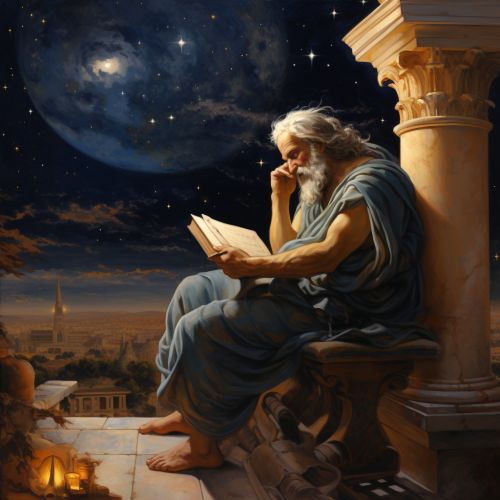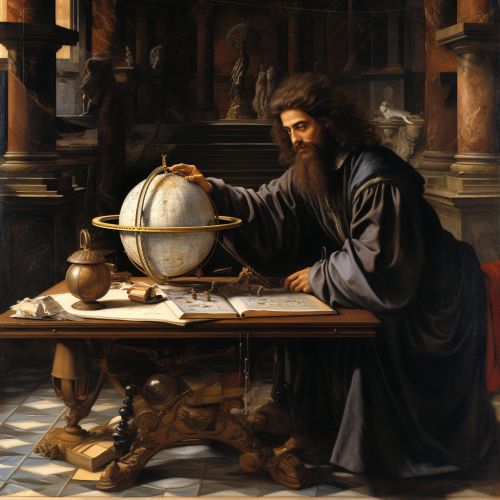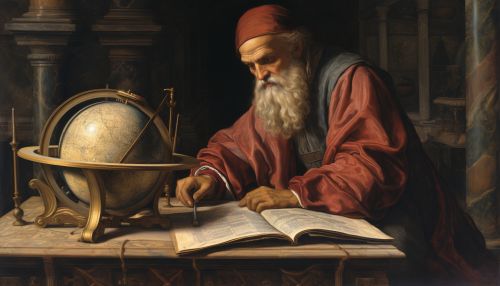History of Physics
Ancient and Classical Physics
The study of physics in the ancient world was a part of the discipline of philosophy. In ancient Greece, the pre-Socratic philosophers, such as Thales of Miletus and Democritus, began to speculate about the nature of the universe and the laws that govern it. They proposed theories about the nature of matter, the structure of the universe, and the forces that govern it. Thales, for instance, proposed that water was the fundamental substance of the universe, while Democritus proposed the existence of indivisible particles, or atoms.


The most significant contribution to physics from the ancient Greeks, however, came from Aristotle. His work, Physics, was a comprehensive study of the natural world, covering topics such as motion, time, and causality. Aristotle's theories, particularly his theory of motion, would dominate scientific thought for nearly two thousand years until they were eventually replaced by Newtonian physics.
Medieval Physics
During the Middle Ages, the study of physics continued within the framework of natural philosophy. Scholars in the Islamic world, such as Alhazen and Avicenna, made significant contributions to the field. Alhazen, for instance, is known for his work on optics and his development of the scientific method, which would later be refined and formalized by European scholars.
In Europe, the study of physics was largely based on the works of Aristotle and other ancient philosophers. However, some scholars, such as John Philoponus and Jean Buridan, began to question and challenge Aristotle's theories. Buridan, for example, proposed the concept of impetus, a precursor to the modern concept of inertia, to explain why objects in motion tend to stay in motion.
Renaissance and Early Modern Physics
The Renaissance and early modern period saw significant advancements in the field of physics. The heliocentric model of the universe proposed by Copernicus challenged the long-held geocentric model, and Kepler's laws of planetary motion provided a more accurate description of the planets' orbits around the sun.


Galileo Galilei made significant contributions to the study of motion and the development of the scientific method. His experiments with falling bodies and inclined planes laid the groundwork for the later development of classical mechanics by Isaac Newton. Galileo's use of the telescope also led to significant discoveries in astronomy, including the moons of Jupiter and the phases of Venus.
Classical Physics
The period from the 17th to the 19th century is often referred to as the age of classical physics. During this time, the laws of physics were formulated in precise mathematical terms, and the scientific method was firmly established as the basis of scientific inquiry.
The most significant figure of this period was undoubtedly Isaac Newton. His Philosophiæ Naturalis Principia Mathematica, published in 1687, laid the groundwork for classical mechanics. In it, Newton formulated the three laws of motion and the law of universal gravitation, which together formed a unified description of the motion of celestial bodies and terrestrial objects.
The 19th century saw the development of thermodynamics, led by figures such as Sadi Carnot, James Joule, and Ludwig Boltzmann. The laws of thermodynamics, which describe the transfer and transformation of energy, have wide-ranging applications in physics, chemistry, and engineering.
Modern Physics
The late 19th and early 20th centuries marked the beginning of modern physics. Two major developments during this period were the formulation of the theory of relativity by Albert Einstein and the development of quantum mechanics by a number of scientists, including Max Planck, Niels Bohr, and Werner Heisenberg.
Einstein's theory of relativity, which includes the special theory published in 1905 and the general theory published in 1915, revolutionized our understanding of space, time, and gravity. It replaced Newton's law of universal gravitation with a new description of gravity as a curvature of spacetime caused by mass and energy.
Quantum mechanics, on the other hand, deals with phenomena on the smallest scales of atoms and subatomic particles. It introduced the concept of wave-particle duality, the uncertainty principle, and the idea that particles can exist in multiple states at once, among other revolutionary ideas.


Contemporary Physics
In the late 20th and early 21st centuries, physics continues to evolve and expand. The development of particle physics, culminating in the formulation of the Standard Model, has led to the discovery of a wide range of subatomic particles. The discovery of the Higgs boson at the Large Hadron Collider in 2012 confirmed the existence of the Higgs field, a key component of the Standard Model.
In astrophysics, the study of black holes, neutron stars, and other exotic objects has led to the development of general relativity and quantum mechanics. The discovery of dark matter and dark energy, which together make up the majority of the universe, has posed new challenges and questions for physicists.
The field of condensed matter physics, which studies the properties of solids and liquids, has led to the development of new materials and technologies, including semiconductors and superconductors. The study of quantum information and quantum computing is a rapidly growing field that promises to revolutionize information technology.
